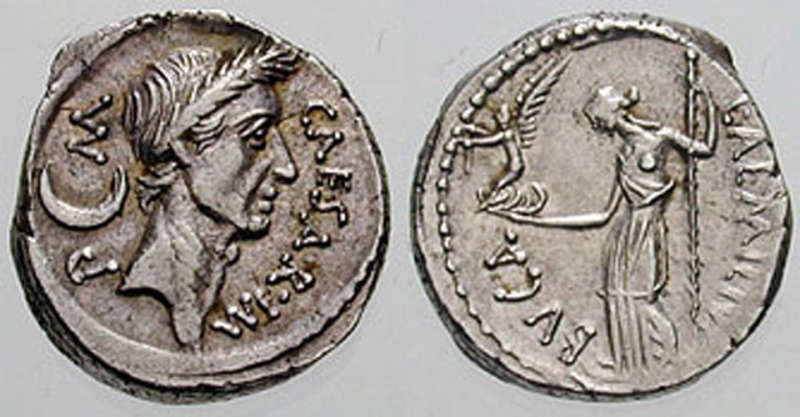Credit & Copyright: Classical Numismatic Group, Inc.,
Wikimedia
Explanation:
In 46 BC Julius Caesar
reformed the calendar system.
Based on advice by astronomer
Sosigenes
of Alexandria, the Julian calendar included
one leap
day every four years to account for the fact that an Earth
year is slightly more than 365 days long.
In modern terms, the time it takes for the planet to orbit the Sun
once is 365.24219 mean solar days.
So if calendar years contained exactly 365 days they would drift
from the Earth's year by about 1 day every 4 years and
eventually July (named for Julius
Caesar himself) would occur during the northern hemisphere winter.
By adopting a leap year with an extra day every four years,
the Julian calendar year would drift much less.
In 1582 Pope Gregory XIII provided the further fine-tuning that leap days
should not occur in years ending in 00, unless divisible by 400.
This Gregorian
Calendar system is the one in wide use today.
Of course, tidal friction
in the Earth-Moon system slows Earth's rotation and gradually
lengthens the day by about 14 milliseconds per century.
That means that
leap
days
like today will not be necessary ... about 4 million years from now.
1999 2000 2001 2002 2003 2004 2005 2006 2007 2008 2009 2010 2011 2012 2013 2014 2015 2016 2017 2018 2019 2020 2021 2022 2023 2024 2025 |
Yanvar' Fevral' Mart Aprel' Mai Iyun' Iyul' Avgust Sentyabr' Oktyabr' Noyabr' Dekabr' |
NASA Web Site Statements, Warnings, and Disclaimers
NASA Official: Jay Norris. Specific rights apply.
A service of: LHEA at NASA / GSFC
& Michigan Tech. U.
|
Publikacii s klyuchevymi slovami:
kalendar' - god, visokosnyi - Leap Days
Publikacii so slovami: kalendar' - god, visokosnyi - Leap Days | |
Sm. takzhe:
Vse publikacii na tu zhe temu >> | |
